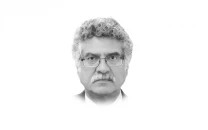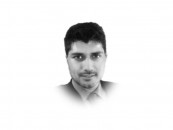HIV in Pakistan: a fight for dignity, not just treatment
For a significant number of people, it is seen as the consequence of personal choices gone awry.

HIV (Human Immunodeficiency Virus) – of which AIDS (Acquired Immunodeficiency Syndrome) is the most advanced stage – is a disease that many avoid discussing openly in Pakistan for fearing of alienation. Despite widespread awareness and medical advancements, there is a reluctance to view it as a legitimate medical condition.
For a significant number of people, it is seen as the consequence of personal choices gone awry. This narrow perspective often leads to rejection from family and close acquaintances, making treatment a daunting task and maintaining one's livelihood a constant struggle. The fear of losing relationships and jobs forces many patients to live in denial, allowing the disease to worsen — even though it is now treatable
The HIV epidemic is on the rise in Pakistan, with an estimated 330,000 people infected by the disease. High-risk groups include individuals who use intravenous drugs, sex workers, men who have sex with men, and transgender people.
However, there is another grim aspect to this rise: medical practitioners using unhygienic and unsafe medical equipment, particularly used syringes. For years, Larkana in Sindh has been identified as an epicentre of HIV, with a significant number of patients, including children.
At the heart of this harmful attitude - shaped by misinformation, religious conservatism and moral judgment — is a culture that resists open conversations, discourages testing and, in cases of a positive diagnosis, drives people into silence.
This stigma stems from the false belief that HIV is only transmitted through immoral behaviour, shifting the focus from treatment and support to protecting social reputation. As a result, patients often face dehumanising treatment, reduced access to medical care and widespread stereotyping.
Women are the worst victims when tested positive for HIV. They are often thrown out of their homes, accused of being responsible for their condition. For transgender individuals and members of the LGBTQ+ community, it is an even more difficult journey — battling not just the disease but also the challenges of surviving as a marginalised group.
As a result, many choose to suffer in silence, hiding behind a mask of invisibility rather than risk losing their jobs, relationships and social standing. Ultimately, this fear - wrapped in concerns about reputation — undermines public health efforts, delays diagnosis and increases the risk of further transmission, exposing more people to the disease.
The treatment through antiretroviral therapy (ART) is available in Pakistan but is not frequently used due to the stigma associated with HIV. However, the buck does not stop at the patient alone. Healthcare workers have also been found poorly trained in managing the prejudices surrounding the disease and in creating a bond with the patient that relies on confidentiality.
Other factors that make HIV treatment difficult - especially for people living in areas like Larkana or other remote cities — include the lack of integration of HIV services into the broader healthcare system, unavailability of dedicated HIV clinics and a dearth of trained and committed general practitioners.
Many non-governmental organisations and community-based groups have helped deliver essential services through counselling, awareness campaigns and outreach to high-risk groups - sometimes in partnership with the National AIDS Control Programme. Their efforts, however, remain compromised by rampant misinformation and limited medical resources.
So, the challenge of combating HIV requires not just better medical resources, but also a sustained struggle against cultural norms shaped by conservatism, religious bigotry and skewed perceptions of male-female sexual relationships. Education and awareness remain the two key antidotes to dismantle these structural barriers and shift the narrative around HIV — from one of stigma to one rooted in empathy and support.
For years, there have been calls to include sex education in schools, yet these have gone unanswered. It is crucial to teach students about the benefits of safe sex, safe blood transfusions and the importance of regular check-ups.
Simultaneously, healthcare providers must receive training on treatment protocols and be sensitised to the cultural norms associated with the disease, with special emphasis on maintaining confidentiality. Tools such as testimonials and storytelling can be incredibly effective in confronting cultural taboos. When people begin to view HIV-positive individuals as part of their community rather than as "others", real change becomes possible.
While some steps have been taken at the governmental level, including the provision of free ART and national awareness drives, these efforts need to be dramatically scaled up. Funding for HIV prevention and care remains insufficient. Inconsistent supplies of medicine and testing kits have also plagued treatment centres, leading to dangerous interruptions in care.
The government must also work to improve data collection and surveillance. Without accurate data, it is impossible to gauge the full scope of the epidemic or to allocate resources effectively. Policies should focus not only on treatment but also on rights-based approaches that protect the dignity and confidentiality of patients.
Policy initiatives must strike a balance between medical treatment and cultural sensitivity, with a strong focus on protecting the dignity of the patient. That calls for a collaborative arrangement between civil society and vulnerable communities. Any solution imposed from above is bound to collapse under the weight of stigma and entrenched social norms. The way forward lies in integrating treatment strategies with the values and cultural sensitivities of the communities they aim to serve.
In Pakistan, the fight against HIV is not just about containing a virus — it is about transforming perceptions shaped by societal narratives of false honour. Breaking the stigma is not a luxury — it's a necessity.



1729685382-0/Untitled-design-(57)1729685382-0-208x130.webp)










COMMENTS
Comments are moderated and generally will be posted if they are on-topic and not abusive.
For more information, please see our Comments FAQ